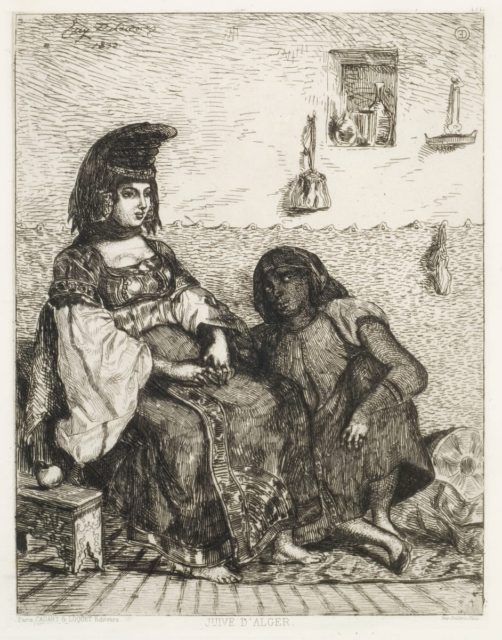Eugène Delacroix (French, b. 1798)
Juive d’Alger (Jewish Woman of Algiers), 1830
Etching
Gallery Purchase
1830’s, North Africa. Eugène Delacroix and his friend, Count de Mornay, are on a good-will, diplomatic mission to the Sultan of Morocco. Delacroix’s drawings fill countless pages of his sketchbooks, depicting his observations of Arab life. An encounter greatly influences Delacroix’s practice; assigned as the dragoman for the travels is Abraham-Ben-Chimol of Tangiers, who introduces Delacroix to his wife and daughter. The trajectory of Delacroix’s etchings shifts to depicting young Jewish women in modest interiors. In Juive d’Alger, a young Jewish woman in traditional dress sits in a homely interior, and beside her is an Algerian woman on the floor. The simple lines and mark-making reinforce the bold texture of this exquisite print and are manifestations of the ingeniousness of Delacroix’s masterful technique. Delacroix’s artistic journey in North Africa introduced edge of realism to his work.
One of leading figures in the French Romantic movement, Eugène Delacroix is also known for his prints, which exalt him as a great printmaker of the modern age. The period in which Juive d’Alger was created marks the revival of etching in France. During this time, the first initiative to promote original printmaking was cemented in the French practice through Société des Aqua-Fortistes. Pioneering painters of the Barbizon School were among the earliest artists to be a part of this etching revival including Jean-François Millet, Édouard Manet, and Camille Corot.
–Adrienne Lee ’21

